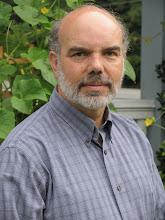My rating: 5 of 5 stars
Classical musicians were the rock stars of the seventeenth century, especially in places like Genoa, Italy. A House Near Luccoli takes an interesting approach to one of those stars, Alessandro Stradella, a composer who was famous during his life but whose fame has faded compared to contemporaries such as Vivaldi and Handel. The book's narrator is Donatella, a young woman who has the good fortune to live with her aunt and ailing grandmother in a house owned by Signor Garibaldi, the prince of Genoa. The prince offers an area of the house to Stradella as a place to stay and work while he's in Genoa. The novel is told from Donatella's point of view. If the plot was set in the twentieth century, A House Near Luccoli would have been Patty Boyd's story rather than George Harrison's or Eric Clapton's.
In keeping with its period, A House Near Luccoli reads more like a symphony than a rock song. It is separated into parts that are like movements of the larger work. The language is not simple, making it the type of book I like to read slowly. There is so much in every phrase and I found I was often flipping back to let the meaning of Denton's words sink in.
Donatella loves to paint. Her sense of style and perfect hand make her the ideal copyist for Stradella's work. This is pointed out by Nonna, Donatella's grandmother, in an interesting scene where Nonna appears to be offering her granddaughter to Stradella for multiple purposes. “'Come here,' Nonna pleaded as Donatella could never refuse. 'Look, signore, at the beauty in her.'”
In addition to his composing Stradella's duties include performing. He calls on Donatella to sing while he plays and he tutors her for that task in one of the most sensual sections of the novel. “'Keep your arms up.' His hands pushed against her diaphragm. 'Make it a sliding note, higher, higher,' he dropped them from the inflation of her breasts, 'with body and voice until you can't feel any difference,' to her waist. 'Reach from your toes!'”
A House Near Luccoli mixes fictional with historical characters. It was fun to use Wikipedia to learn more about Stradella as I read the novel and Youtube to hear performances of his music. I recommend this book for readers who enjoy historical fiction with beautiful language.
View all my reviews






